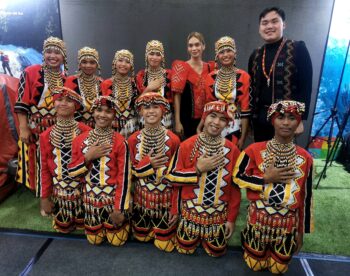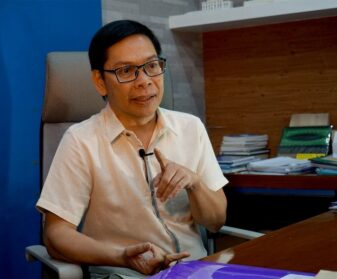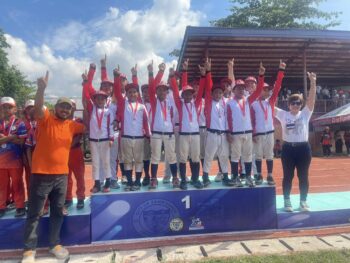
“Bless the beasts and the children, For in this world they have no voice,
They have no choice. Bless the beasts and the children,
For the world can never be, The world they see.
Light their way, When the darkness surrounds them;
Give them love, let it shine all around them. Bless the beasts and the children;
Give them shelter from a storm; Keep them safe; Keep them warm.”
The above lines are from a song of the same title, composed by a Californian songwriter, Barry de Vorzon. It became the theme song of the 1971 film with the same title and made popular by the Carpenters, appearing on the B-side of their hit album, Superstar.
This song might as well be the theme song for this year’s celebration of the Season of Creation which runs from 1 September (World Day of Prayer for the Care of Creation) to 4 October (the feast of St. Francis of Assissi). This yearly celebration, which was first proposed by Pope Francis in his encyclical letter Laudato Si, takes place every year as an ecumenical season dedicated to prayer and action for the protection of creation.
One possible focus of the 2023 Season of Creation celebration could be centered on the well-being of beasts and children as they are faced with extreme vulnerability brought about by the impact of climate change. If grandparents and parents care so much about their children, there is so much they need to do now for their protection. Not just from hunger, ignorance, and safety from all types of harm but what eventually would happen to them if at this moment the world refuses to find more ways to mitigate the impact of climate change.
Just to cite some examples: as mining firms like the Sagittarius Mines Inc. in Tampakan, South Cotabato and other mining companies insist on expanding their mining operations, children of indigenous families (e.g. the Blaans) are bound to be dislocated from their ancestral domain. The same with the Aeta children that could be displaced once the Kaliwa Dam is constructed in Quezon province. Or children of rural peasant folks who suffer the consequences of flooding in their localities as deforestation remains unchecked. Or children in urban areas playing in the streets filled with toxic gas from all the pollution surrounding them. And all the children who suffer the consequences of the never-ending disasters taking place in this beleaguered archipelago.
In 2018 – five years have passed already – the United Nations Human Rights Council issued the “Report on the Rights of Children and the Environment.” This Report arose from the Council’s Resolution No. 28/11 which asked for a clarification on some aspects of the human rights obligations related to the environment. It then “asked the Special Rapporteur to continue to study those obligations, in consultation with Governments, human rights mechanisms, civil society organizations and others.”
By then, it was recognized that the children were the most vulnerable to environmental harm caused by air and water pollution and exposure to toxic substances. These have caused 1.5 million deaths of children under the age of five every year and also causing disease, disability and early mortality. “Making matters worse, children are often not able to exercise their rights, including their rights to information, participation and access to effective remedies.”
The Report then provided some proposals as to what the State apparatus of nation-states should do to fully respect the children’s educational and procedural rights including the following:
1. Ensure that the effects of proposed measures on children’s rights are assessed before the measures are taken or approved;
2. Collect information about sources of environmental harm to children and make the information publicly available and accessible;
3. Facilitate the participation of children in environmental decision-making processes, and protect them from reprisals for their participation or otherwise expressing their views on environmental matters;
4. And remove barriers that children face to access to justice for environmental harm to the full enjoyment of their human rights.
Meanwhile, so many other things need to be done by the State from its agencies like the Department of Environment and Natural Resources all the way down to the local government units to protect children from environmental harm. This includes the adoption and implementation of environmental standards as proposed by international health and safety agencies and to pursue precautionary measures to prevent such harms. All these are measures to help promote the children’s rights to a healthy and sustainable environment.
Those of us among civil society organizations including faith-based institutions that have taken to heart the call of Pope Francis in Laudato Si, might find ways to collaborate with the Global Children’s Environmental Rights Initiative (CERI) that had earlier proposed various ways to reinforce the call for promoting children’s rights. Schools, non-government organizations, cultural groups, civic organizations and churches can supplement the initiatives of governments in this regard. CERI’s proposed the following actions:
- “increasing awareness and building capacity among national, regional and global decision-makers about the relationship on children’s rights and the environment, including State obligations in this respect;
- convening key stakeholders and facilitating dialogue and stronger cooperation in relation to fulfilling children’s right to a healthy environment; and
- shaping and securing international recognition of a global set of guiding principles on children’s environmental rights, and informing standard-setting and policy development at global, regional and national levels.”
All around the world today, we have seen how children themselves have marched in the streets carrying placards demanding their governments to seriously deal with climate change, painted murals on walls manifesting their deep ecological concern, organized signature campaigns to push their local bureaucrats to walk their talk and exhorted their parents and elders to act on their behalf. Led by Greta Tintin Eleonora Ernman Thunberg – a Swedish environmental activist who has been known for challenging world leaders to take immediate action for climate change mitigation since she was 15 years old in 2018 – children and the youth no longer rely on their elders to take seriously the challenge of saving the planet, our common home!
Still, we adults and elders shoulder the greater responsibility to militantly act to stop all the abuses committed against the integrity of creation, to pressure the government to do much more to reduce our dependence on fossil fuels and to come up with alternative sources of energy and to do our share in adopting everyday actions that can reduce our carbon footprints, e.g. recycling, cutting on consumerist habits and stop relying on the comfort of private vehicles.
For after all in the words of the wise Native American visionary chieftain, Chief Seattle: “We do not inherit the Earth from our ancestors—we borrow it from our children.”
(MindaViews is the opinion section of MindaNews. Redemptorist Brother Karl Gaspar is Mindanao’s most prolific book author. Gaspar is also a Datu Bago 2018 awardee, the highest honor the Davao City government bestows on its constituents. He is presently based in Cebu City).







